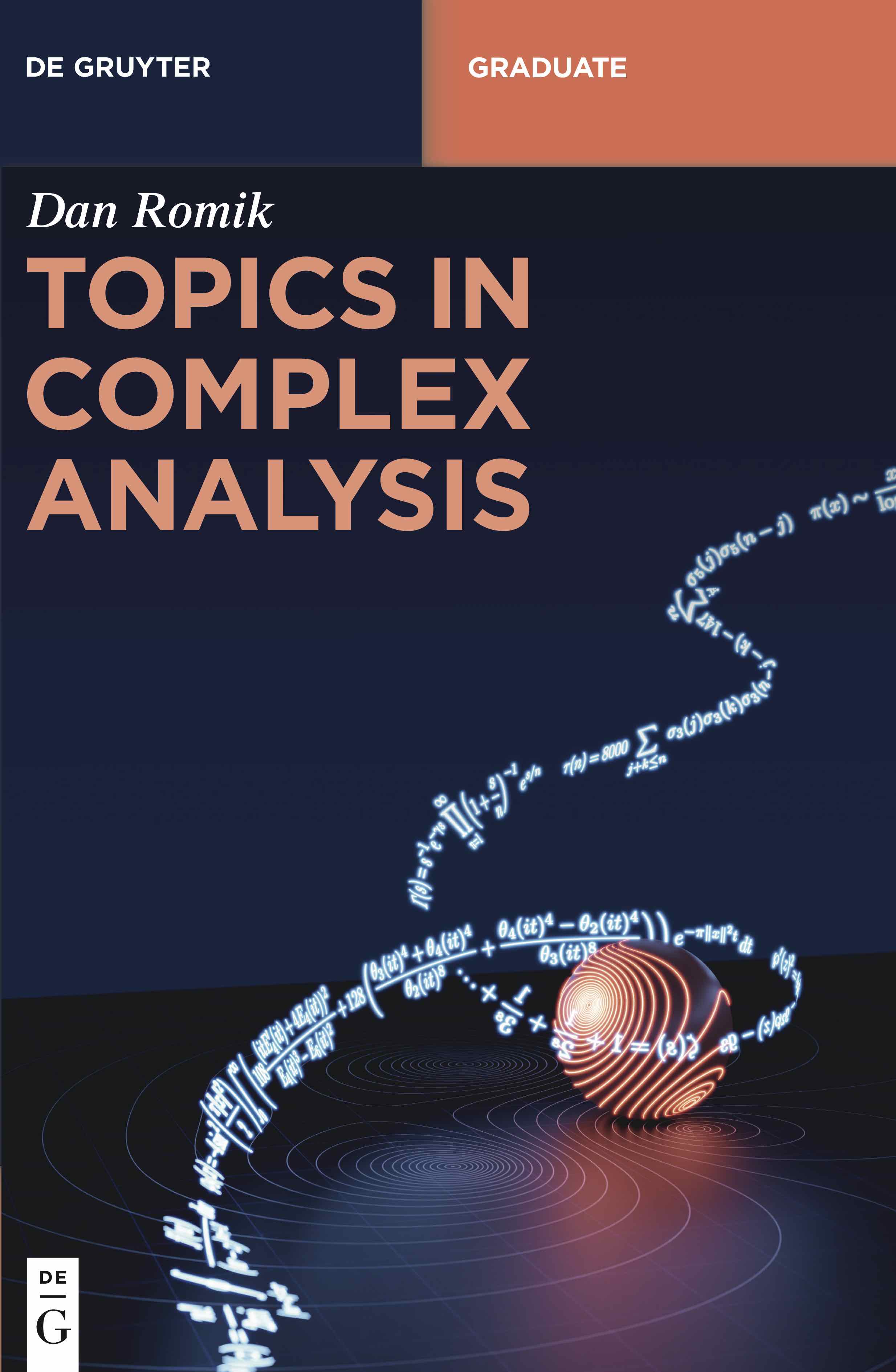Topics in Complex Analysis was published by De Gruyter in 2023. The book is available for purchase or as a free digital download from the publisher's website.
Table of contents
Book errata (PDF, updated March 6, 2024)
Reviews and endorsements
- "This is a fantastic book. Complex analysis is a central topic in the education of any mathematician. There are many classic texts that are wonderfully thorough. They leave the beginner in awe of the abstraction and power of the subject but with little understanding of what the applications might be. This magnificent text proves the Prime Number Theorem in Chapter 2. Few results in mathematics could be more exciting for the beginner than the fact that something seemingly as esoteric as complex analysis could tell us about the distribution of the prime numbers. What a great idea! There follows more complex analysis, plus elliptic functions, modular forms and sphere packing. Wow! Anyone emerging from reading this work will be filled with a true appreciation of the power and glory of complex analysis."
-George E. Andrews, Pennsylvania State University
- "[...] Romik’s text is a well-written, easily accessible introduction to the basics of complex function theory, but with a focused eye on elliptic function theory, and from then on to the theory of modular functions. The high point of the book is a very elegant presentation of the proof of Viazovska’s theorem [on sphere packing in dimension 8], using the modular function theory developed in earlier chapters. The text also has a useful Appendix explaining the basic of lattice packing theory.
Romik’s book is a great service to the mathematical community, making Viazovska’s wonderful result, for which she won the Fields Medal in 2022, easily accessible to the mathematical public. Romik’s book is close in spirit to his earlier very successful text, “The Surprising Mathematics of Longest Increasing Subsequences”, in which he broke down and clarified the intricacies of the final resolution of Ulam’s longest increasing subsequence problem."
-Percy Deift, New York University (read his full review)
